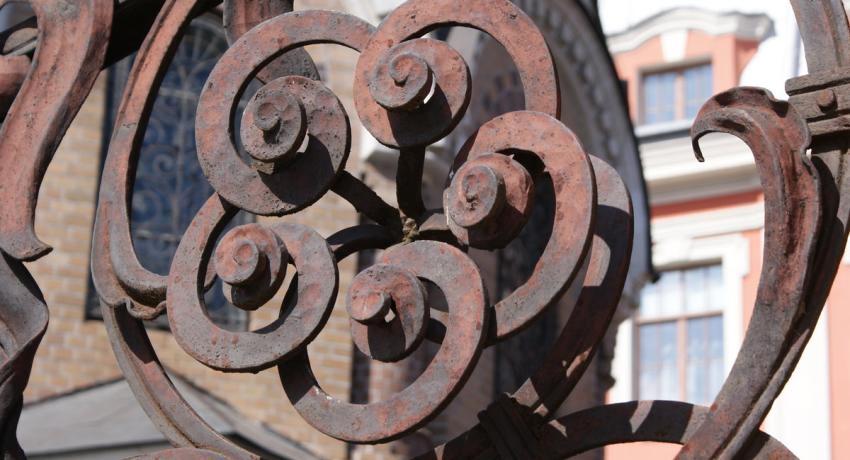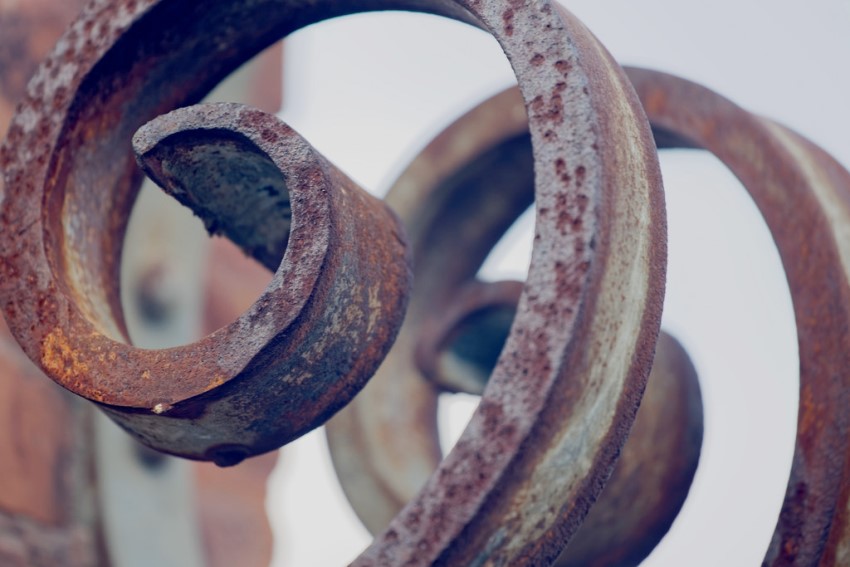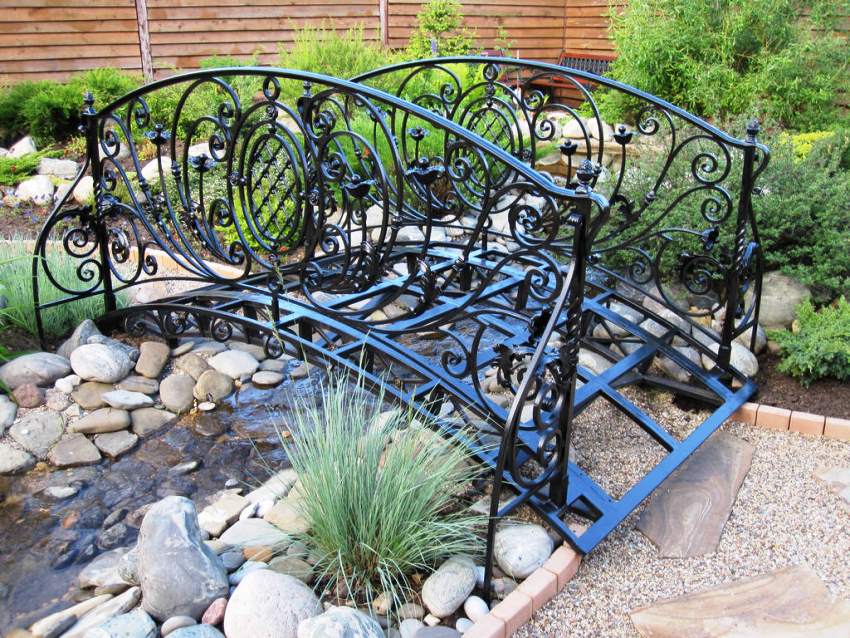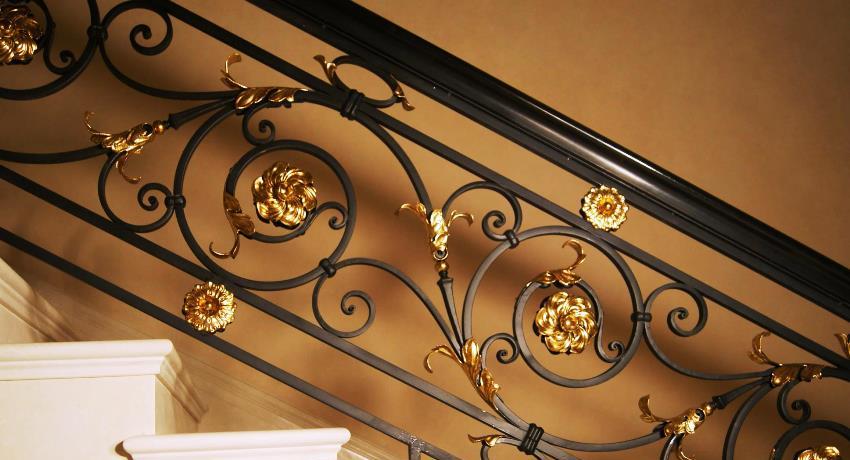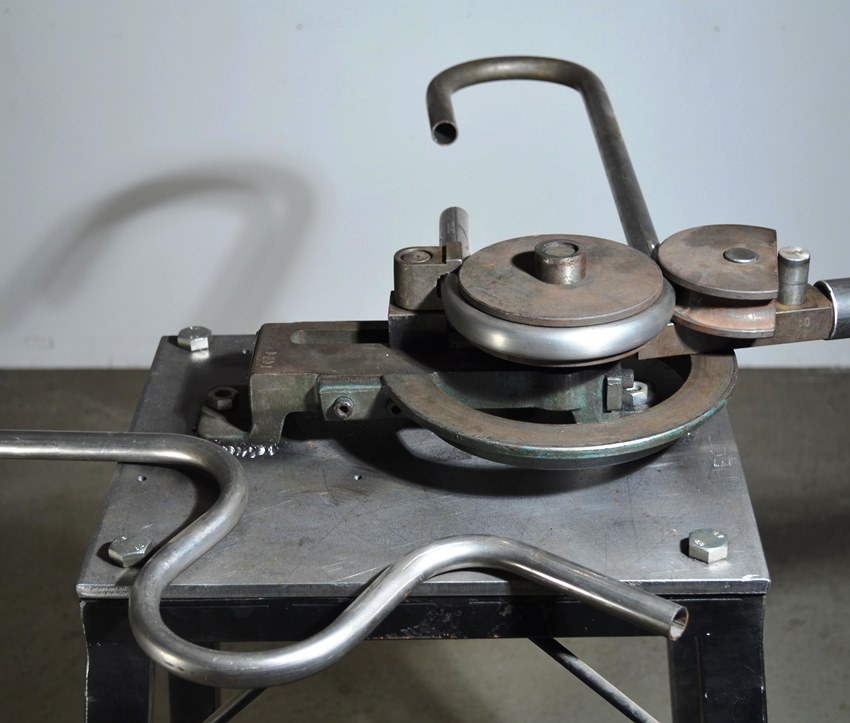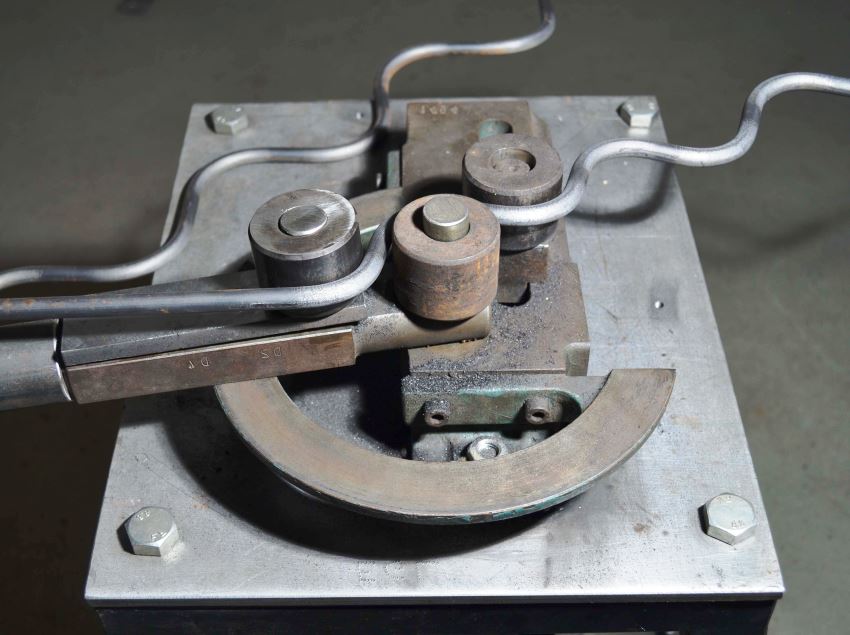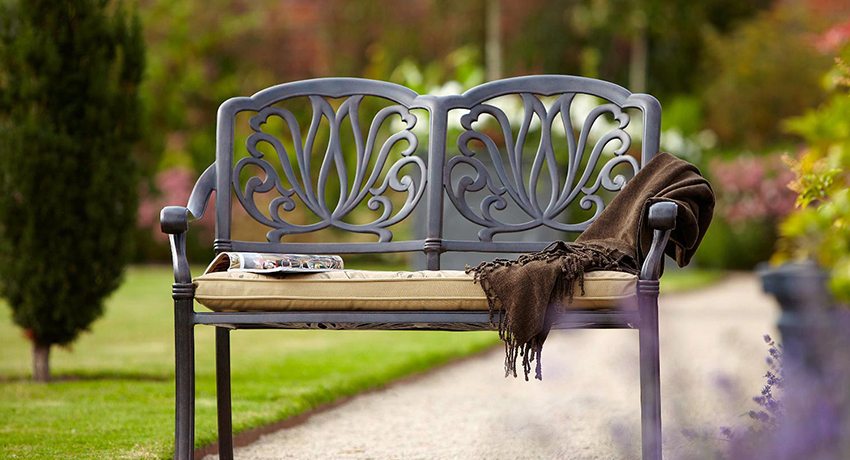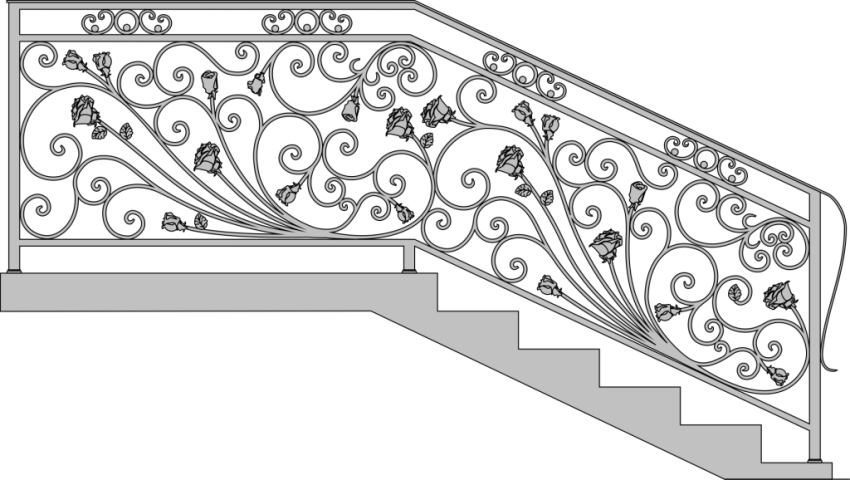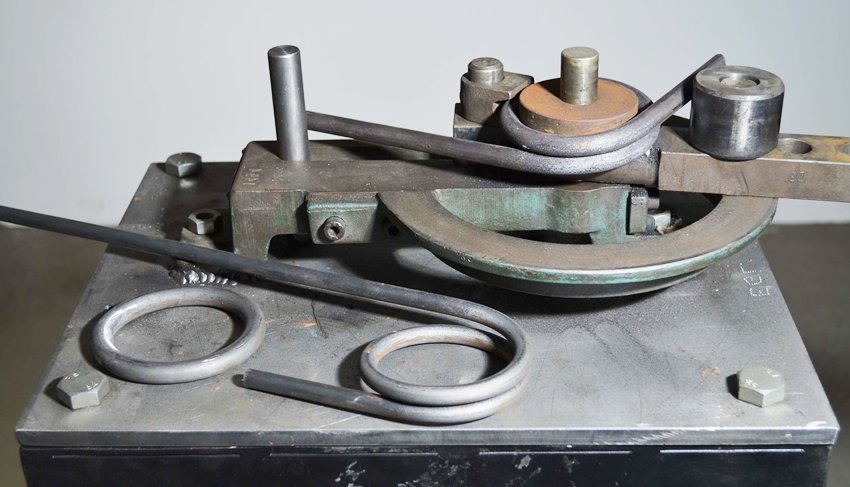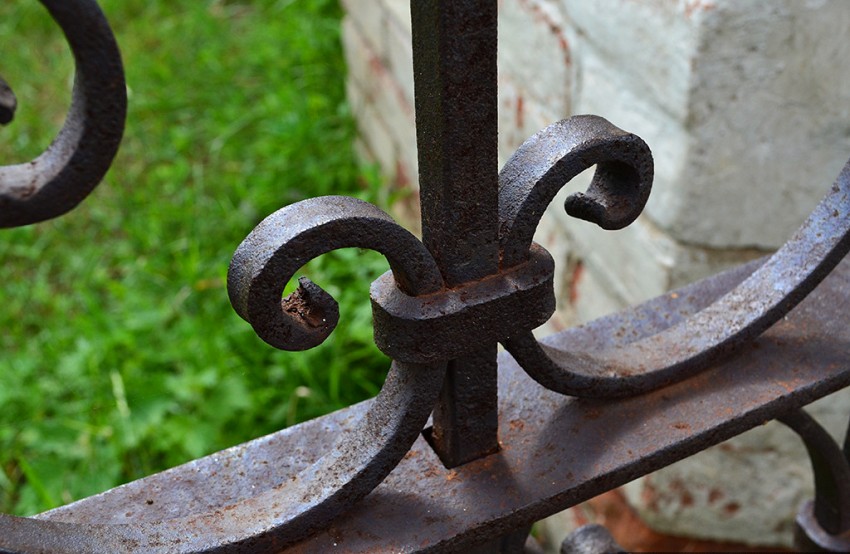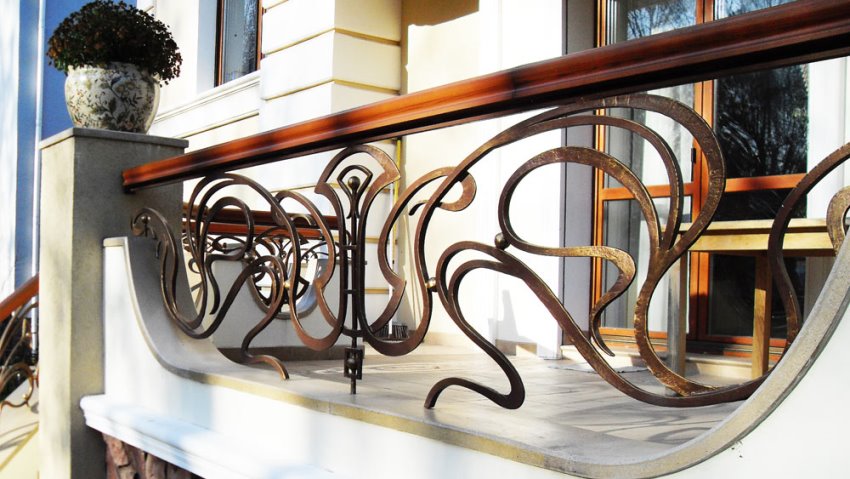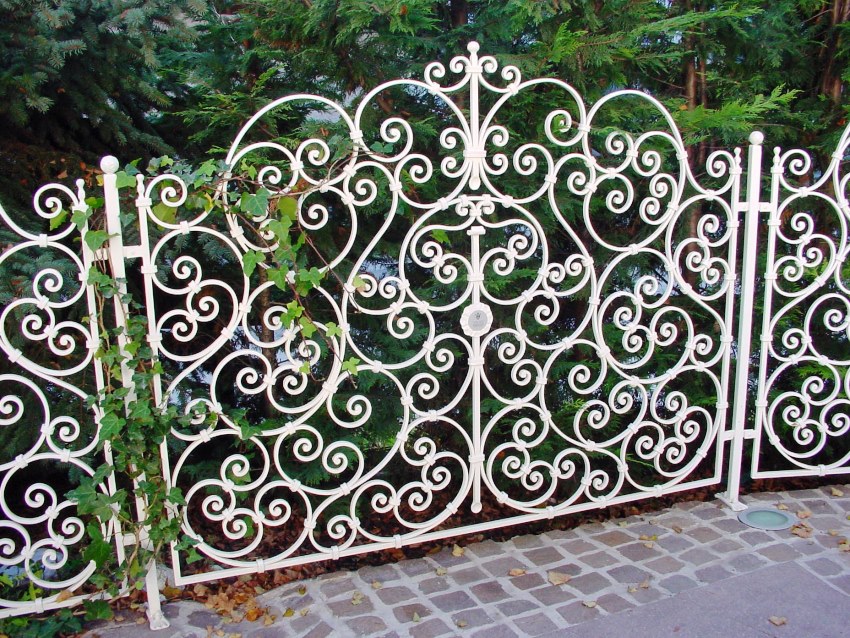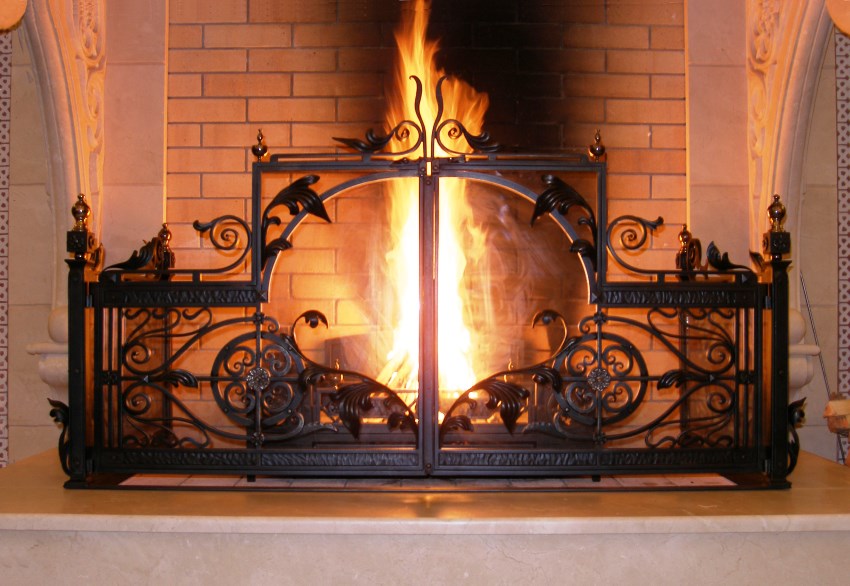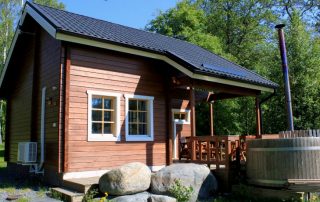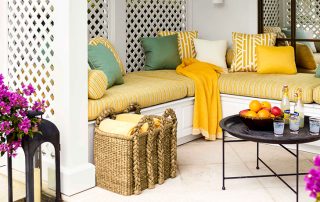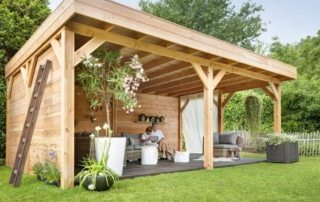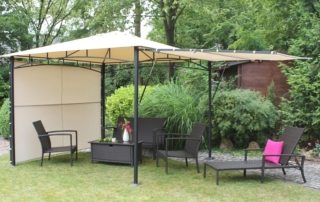Do-it-yourself cold forging is a method of forming metal products under pressure. This method consists in the fact that the metal is not heated before deformation, but bends using special machines. Forged patterns will decorate the garden fences, stair railing, windows or entrance doors. Simplicity and low cost will allow any person to quickly master the process and independently implement their ideas.
Content [Hide]
The history of the forge: description of cold forging
Forging is the process of processing metal to give it the desired shape, transforming a blank (blank) into a product. People who are unfamiliar with the peculiarities of metalworking associate the word "forged" with a forge, where a blank is heated from 800 to 1000 ° C and processed with a hammer to shape it. But in everyday life, objects made by cold forging are more often used. Pots, kettles, patterns on gates and doors, metal supports are made by deforming metal under pressure without preheating.
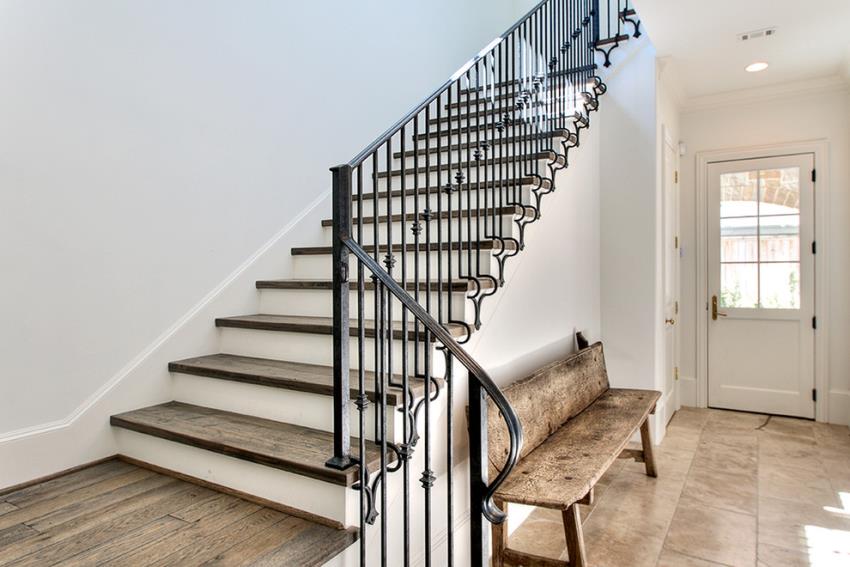
Beautiful forged items can be created even at home without the presence of special expensive equipment
Cold forging is easier, safer and more ergonomic than hot forging. Main advantages:
- equipment for cold metal forging is cheap and ergonomic;
- low labor intensity;
- fast work training, low qualification requirements;
- the ability to create a unique ornament from basic elements.
The downside is the limited work surfaces and materials: rods, sheets and plates.
Hand cold forging is historically older than hot forging. The first items were found in Egypt and Mesopotamia and date back to 4-3 millennium BC. Initially, ore was used, which gave in to deformation after being hit by a stone. Cold forging was used to make gold jewelry. It was convenient to work soft metal with stone hammers. The oldest product was found in Egypt, it was made 8 thousand years ago.
Several centuries later, observing volcanoes, people learned that thanks to the high temperature, metal is much easier to shape.They began to build blast furnaces - the profession of a blacksmith appeared. The Stone Age was replaced by the Iron Age, not only jewelry, but also dishes, weapons, garden tools entered the life of people. The principle of the forge has been preserved to this day, but the equipment for cold forging has been modernized.
Basic tools for cold forging at home
The creation of a unique product always begins with material calculations and the development of a detailed work plan. The easiest way to think through the moves is by creating sketches of forged products to scale, writing down the dimensions and choosing the right tools. The choice of material deserves special attention. The metal should be strong but bend easily.
Important! Hardened sheets or rods cannot be used. Under the influence of a temperature drop, the structure of the metal changes, it becomes brittle and can break under pressure.
There are two types of forging metal with your own hands - rolling (working with rods) and stamping (extruding sheets under a press). At home, the first option is more often used. For pressing sheets, you need to make a special blank for deformation. Common tools for rolling: gnut, snail, twister, wave and flashlight.
Gnutik is a basic tool used to bend rods at different angles. Cold forging spiral elements are twisted with a snail. For shaping, it is best to choose rods with a diameter of 10-12 mm. Choosing too thick material can significantly complicate the work of the master.
The twister machine is used to twist the rods along the longitudinal axis. The wave is, accordingly, designed to create undulating elements. The flashlight tool is used to work with several rods at once. They are mounted on a rig and bent by rotating a lever.
Equipment for rolling at home
Do-it-yourself cold-forging devices can be bought or made yourself from improvised means. Initially, you need to create 2-3 basic workbenches for processing one rod. The design and complexity of manufacturing depend on the type of work being performed. Careful study of the process will allow you to make the equipment yourself.
Gnutik: what products can be created with it
It is not necessary to create drawings for cold forging with your own hands. It is enough to look at the principle of operation once to make the instrument yourself. The machine is a steel tooling that is divided into three parts. The middle element (leash) is movable; a central roller (wedge) is fixed on it, which bends the rod. On the side plates, the rollers are replaceable and inserted into the groove. By choosing a different diameter, you can vary the bending angle of the rod or plate. A lever is fixed on top of the leash, which sets the structure in motion.
Note! Bending a rod requires a lot of effort, so securing the workbench to a movable support will result in improper bending and make work more difficult.
The rollers should rotate freely in the holes, which will reduce the force that needs to be applied to bend the plate. The grooves for the rollers can be drilled in several places symmetrically to each other. This will allow you to quickly move parts by varying the desired bending angle.
The mechanism of metal bending by a curvature:
- a plate or rod is installed between the rollers;
- in a vice the central roller is pressed against the metal;
- by rotating the lever, the plate moves along the roller, acquiring a given bend.
For convenience, a limb is placed under the central roller (a tape with divisions showing the height of the corner).It is used to manufacture parts with high precision that must match perfectly.
Snail: A Simple Tool to Create Curls
The second name is a do-it-yourself cold forging conductor. For manufacturing, you need to familiarize yourself with the bending process, for example, watch the forging video. Then the construction itself will not raise questions and will be easy to repeat. The workbench is a frame on which the main die or spiral module stands. A rod is driven into the snail and bypasses with a metal roller, pressing against the arc. The frame must be made of metal, since wood quickly collapses after prolonged stress. For this purpose, metal corner, thick-walled pipe or channel.
The machine is designed for two tabletops. One serves as a support and takes up most of the pressure, while the other holds the shape of the snail. Two circles are cut out with a thickness of at least 5 mm. The first part is installed on the frame. Above, the center of the circle is outlined, a three- or four-leaf leg is welded to distribute the load.
The upper part of the snail, on which the metal is bent, is called a module. It can be static or typeset.
A static module is a cold forging device designed to bend similar parts of a pattern. You cannot change the radius or bend angle. Before starting the formation of the module, a markup is drawn on the tabletop. A snail is drawn from metal plates (not less than 0.6 mm thick) and welded.
The dialing module consists of several parts. Its use is the most common for do-it-yourself art forging, as it allows you to create elements of different radii. Initially, markings of parts are drawn on the tabletop and grooves are calculated. Removable parts of the snail are cut out of thick metal. Holes for fastening to the table top only need to be cut in the middle. Otherwise, the stress is distributed unevenly and the groove breaks faster.
The do-it-yourself forging module can be made replaceable. A structure of the required radius is welded onto a metal circle. It is attached with grooves or bolts to the worktop. To manufacture elements of different diameters, several modules are made that can be used on one machine.
A rotating shaft and a lever must be fixed between the worktops. It is necessary that the distance between the roller and the module is at least 2 cm, and the shaft travel must extend beyond the tabletop. A movable element is installed on the lever handle to adjust the radius of the roller stroke.
Wave: how to create and use this tool
Wave is a tool for forging lines like a sine wave. Two rollers are milled according to the specified dimensions. The first roller is static (the rod will bend around it), it is fixed on the support. The second is the leader, it is fixed on the lever and rotates when it touches the surface. Pressure is generated between the shafts, which acts on the metal and causes it to bend.
The static bead can be turned into a stepped pyramid. Thus, the radius of the wave can be changed by moving the lever and the rod higher by one division. When using such a machine, one side must always be held in order not to damage the bend. For a more accurate repetition of the waveform, two static rollers are machined, one of which holds the rod in the desired position, preventing further deformation, and the second is bent.
Flashlight and twister: features of these machines
The flashlight is a cold forging equipment for working with multiple rods and creating bulky baskets. In order not to design the bed, a conventional vise can be used to clamp the tool. The tool consists of three parts: two dies and a roller. The matrix can be made of strong, preferably hardened metal 4-5 cm wide.
In each die, a central hole is machined into which the roller is mounted. On the sides, grooves are made for installing the rods. The second die should move freely along the lever, since the distance between the working surfaces decreases during deformation. When you rotate the lever, the rods are bent in a spiral, forming a structure similar to a flashlight. DIY metal products, which consist of several rods, are fixed by welding.
The twister machine has a similar design. However, instead of a shaft, a rod is inserted into the matrix, which is pressed with a plate or bolts. Between them you need to install a movable element that moves forward when the shaft rotates. The rod is twisted along the longitudinal axis, forming a symmetrical spiral.
Important! The travel matrix should approach static with every rotation. If it is fixed in one position, the master will have to make more effort to perform the bending of the rods.
Cold forging with your own hands under the press: creating blanks for forming products
On forged fences and fences, you can often see not only geometric patterns, but also flowers, butterflies, leaves and other decorative elements. They are also made using the cold forging technique, but by rolling, not stamping.
Related article:
DIY metal garden benches: drawings and photos of structures
A detailed description of the technological process of creating a convenient structure based on a shaped pipe.
Do-it-yourself bulk forged products are made from sheet blanks. Working with a press at home is less common than rolling. The extrusion of sheets under the press can be either manual (knock-out and pressed in), and automatic. It is cheaper to use hand stamping at home. To do this, the master needs to make several blanks, which will be printed on a metal sheet under pressure.
Equipment for metal forging:
- Punch (press stamp or cotter pin) - the upper part of the press, it pushes the sheet inward. The pressing side of the stamp can be either drawing or smooth.
- Matrix - an element that is made in the shape of the required object. The applied relief deforms the plate under pressure, giving it the required shape.
- Press Lever - A knob or relay for bringing the dies closer together and adjusting the press force.
Before starting work, you need to create a drawing of the future product. Artistic forging sketches are transferred to the workpiece, it is cut and grinded at the edges. A regular vice can be used as a pressing bench. It is most convenient to place them in an upright position so that the plate lies horizontally on the plane. Thus, the plate will be located exactly between the dies and will not slip out during the rotation of the lever.
Simple metal forging at home can be done with a chisel and hammer. In this case, the chisel acts as a punch, the anvil acts as a matrix, and the hammer acts as a lever. For better printing of the pattern, you can put a notched plate under the sheet. So the relief will be clearer and more beautiful.
Important! The metal used for stamping must be softer than the punch and die. Otherwise, the tools will quickly break.
To make the element "sheet", a workpiece of the desired shape is cut out of a metal plate 20-30 mm thick. A longitudinal line is drawn on it with a pencil in the center. The chisel striker is set at an angle to this straight line. After hitting the handle, a line is imprinted on the plate, similar to the veins of the leaves.
You can use pliers to form the required volume of the cold forged product. The part is clamped between a vice and bent into the desired shape. This kind of work is well suited for doing a small number of items for personal use. The process of beating a drawing by hand takes a lot of time, it is rather monotonous and requires great precision.
It is more profitable to purchase stamps for permanent work (in the form of leaves, petals, flowers, etc.), since precise turning of two identical elements is a very complicated process. The main parts are milled from a blank or cast by hot forging. Such work requires a lot of experience and high precision. The punch and die must match. Under strong pressure, unevenness will be printed on the product. If the discrepancy is very large, then the press will crush the workpieces - and you will have to start from scratch.
Styles and elements of patterns: photo of artistic forging
Creating a beautiful pattern begins with a forging sketch. The master must clearly imagine the picture he wants to make. Initially, a drawing is drawn, materials are calculated, the number of necessary elements, machines and equipment are selected. In order for the product to look beautiful, it is better to immediately choose the style in which it will be performed. By reviewing the photos of cold forged products, you can easily see which direction the pattern belongs to.
There are several styles of forming a forged pattern.
Roman style characterized by rigor and symmetry. On fences, you can see a dense arrangement of spirals in the same order, details are often repeated and of the same type. This is a monumental design using a volute element (C-shaped twisted one-sided curls).
Gothic ornament... Few people know that modern fences and fences are most often made in this style. A characteristic feature is the striving upward. The rods are pointed, end with pommels in the form of arrows, spears or sharp thorns. The spiral elements used in this style are called notches, and they look like a stem branched in different directions. For a change, lanterns or volumetric spirals are added between the straight rods.
Renaissance is very rare. In this style, pointed charcoal elements are practically not used. The basis is round arcs, spirals and waves. Branching of metal rods is decorated with leaves or flowers, graceful bends take the shape of a figure eight. Characteristic elements are notch, spiral, volute and figure eight. The style is very harmonious, the details are set symmetrically in the form of intertwined lines.
Baroque - the complete opposite of the Renaissance. The style is delicate and very lush. C-shaped spirals, curls, curls, curved lines and intricate patterns are used. Voluminous leaves and flowers are added to the weaves, creating a dynamic form.
Rococo... This trend is characterized by the use of thin twigs and double-sided curls. Rocaille ornament creates constant movement, is distinguished by filigree and volumetric patterns. In the photo of cold forging, asymmetry and fractional ornament are noticeable. The use of straight rods and flat gratings is unacceptable.
Classicism... A beautiful yet simple style that brought symmetry back into fashion. To create an ornament, curls, notches, spirals and straight rods are used.Another element is introduced into use - a meander (broken lines or rods curved at a right angle). Vertical architectonics are always strictly adhered to in fences.
Empire style characterized by the presence of geometric patterns, long smooth twigs. The main element (volute) is modified: an elongated straight line with one-sided curls at the ends. The main thing for this style is strict simplicity, symmetrical geometry in combination with spiral elements.
Art Nouveau, or modern, added biological motives to artistic forging with his own hands. The style does not use straight lines, only a variety of bends, meanders, curls and spirals. Symmetry fades into the background. The ornament repeats the silhouette of a person or an animal, leaves and flowers are added. The pattern is built in such a way that the curls evenly flow into each other throughout the ornament.
If a person starts work without a preliminary drawing, he will quickly get confused in creating a cold forged product. Each pattern should be thought out as much as possible, and the edits that are made during the work should be transferred directly to the sketch in order to clearly understand what the result should be.
Note! Even if there is a photo of forged patterns, you need to make a drawing and markup to accurately place all the details.
Fastening of pattern elements: latest metal processing
After all the necessary elements of the ornament are created, its formation begins. The appearance of the pattern may differ slightly from the sketch. To identify possible errors, you need to do a preview. Initially, the pattern can be laid out on a flat surface without fastening parts of it. Thus, you can assess how much you managed to bring the idea to life, as well as correct shortcomings in your work. You should not start forming a pattern without previewing the result.
There are two main types of connections:
- Weld;
- rivets (or art clamps).
The welding machine is useful in those places where the joint seam can be easily cleaned or invisible. To preserve the aesthetics of the ornament of the product from cold forging, you can put curly rivets. They will securely hold together the components and complement the decor.
The ornament is connected gradually, depending on the number of details. Initially, small elements are fastened together, grooves, twisted lines and monograms are formed. Welding is used. The seam is leveled with a grinder using a 0.6 cm thick grinding wheel. It easily bypasses bends and irregularities. Large parts are connected with curly clamps. The rivets are placed symmetrically to each other to complement the pattern. At the end of the work, the ornament is bypassed with a cleaning or polishing wheel.
Artistic blacksmithing is not only a business or a job, but can also be an entertaining hobby. Do-it-yourself cold forging equipment can be made even by a novice master from scrap materials. Cold forging specialists can be safely called artists, as they create beautiful ornaments from rough twigs, pipes and sheets. Such hobbies require full dedication and considerable expenses. However, all invested funds and efforts will bear fruit if they are supported by the desire to create beauty.
